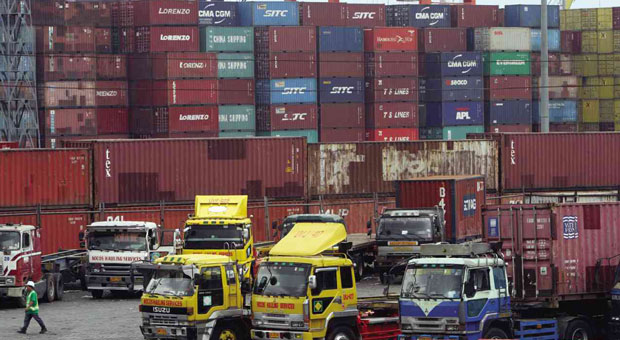20,000 ecozone workers affected by truck ban
MANILA, Philippines–About 50 export firms operating within economic zones mostly in the Calabarzon (Cavite-Laguna-Batangas-Rizal-Quezon) have implemented shorter working hours and forced leaves affecting up to 20,000 workers amid delayed production as a result of the truck ban in the city of Manila, according to the Philippine Economic Zone Authority (Peza).
On the sidelines of the Philippine Semiconductor and Electronics Convention and Exhibition (PSECE) 2014 on Wednesday, Peza promotions and public relations manager Elmer H. San Pascual told reporters that a number of locators had been complaining that it now took at least five days before shipments get released from the Port of Manila as trucks were barred from traversing the city’s roads.
“The imported raw materials are being affected, hence their production is also being affected,” San Pascual said.
Up to 20,000 workers have been forced to take temporary leaves or had their working hours slashed because of the delay in production among 50 ecozone companies, San Pascual said, citing preliminary reports received by Peza.
Of the 3,276 firms operating within export zones nationwide, 60 percent are located in the provinces that make up Calabarzon, with the bulk of them manufacturing firms, he noted.
The Port of Manila remains the main gateway for Calabarzon-based exporters’ shipments—both imported raw materials and finished goods for export, despite moves enjoining economic zone locators to tap the Port of Batangas down south.
Last January, Peza extended for another year the 50-percent discount on all processing fees for ecozone import and export full-container load shipments to be discharged or loaded at the Batangas International Port.
This month, the feeder vessel of Singaporean-led MCC Transport has added another shipping day as several Peza locators have been increasingly using the Batangas port to avoid the truck ban in Manila, San Pascual said. “Starting June 1, they operate on Saturdays and Sundays,” he said.
San Pascual said MCC might add some more shipping days if up to 65 percent of Calabarzon-based exporters would use the Batangas port. At present, however, only 10 percent of the port’s capacity was being tapped, although this was higher than the 3-4 percent utilization rate a few years back, he said.
“Using the Batangas port is a permanent solution to the congestion at the Manila port,” San Pascual said.
Originally posted at 11:10 pm | Wednesday, June 4, 2014
RELATED STORIES
Manila ports still congested following truck ban

